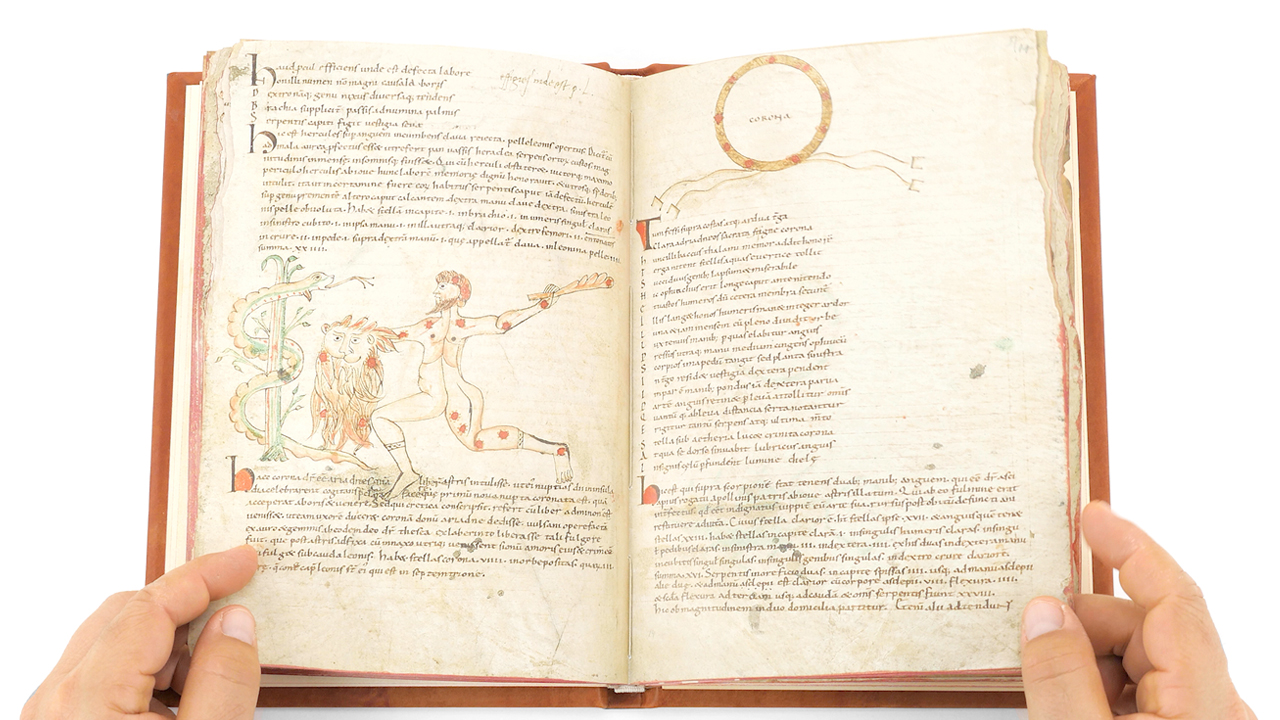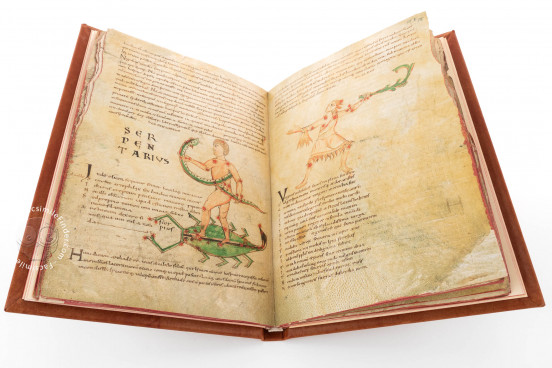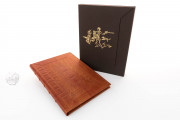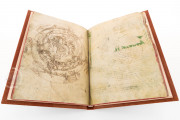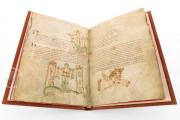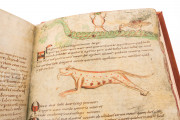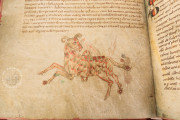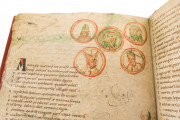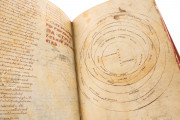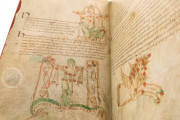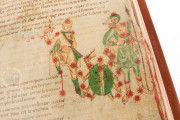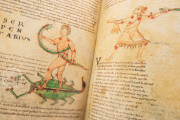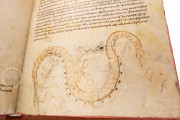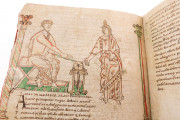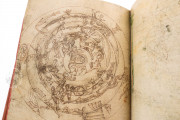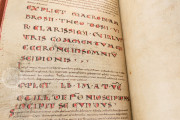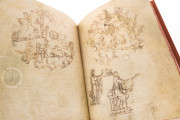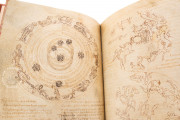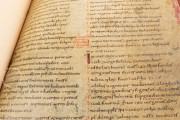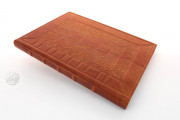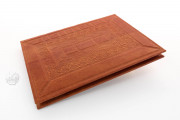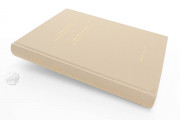The Aberystwyth Aratea is composed of the first twenty-six folios of a longer compilation of astronomical texts in Latin. These folios date to the eleventh century and were created near Limoges, France. The text is Germanicus’s translation of the Phenomena by Aratus of Soli. Twenty-three pages contain illuminations generally half- to full-page size. About half of these are colored illustrations of the individual constellations described in the Latin text. The other half are star charts showing the position of the constellations relative to one another in the sky in both the northern and southern hemispheres and additional astronomical diagrams.
Named for its current home in Aberystwyth, Wales, the Aratea was bound with a slightly later text. Both are written in Caroline minuscule with textual decoration limited to rubrics and uncials infilled with red. The layout of the text varies, likely preserving that of the exemplar. Empty spaces may indicate where a picture in the exemplar was not copied. The Aberystwyth Aratea was in Wales by 1816 and is currently the oldest scientific volume in the National Library of Wales.
Fully Illustrated Romanesque Astronomical Text
This copy of the Phenomena of Aratus dates to probably the earlier part of the eleventh century and contains seven-star charts and diagrams and twenty figural drawings, most of which are colored with red and green tones. The majority of the pictures directly illustrate the constellations as described in the text.
Additional pictures include an author portrait with his muse and a depiction of Zeus, the creator of the heavens. The illustrations were copied by competent—though hardly professional—artists and preserve the standard Classical astronomical iconography, some of which survives to the present in typical depictions of the zodiac.
The Phenomena of Aratus
Aratus of Soli lived c. 315 – c. 240 BCE and served in the court of the Macedonian king Antigonus II Gonatas. His famous work, the Phenomena, describes the constellations and is based on the earlier work of Eudoxus of Cnidus, a student of Plato’s.
The poetic work provides a verbal map of the heavens describing the means by which to find one constellation relative to others as well as their movements based on the Classical geocentric cosmology. Aratus’s Phenomena became a popular and much-translated text in the Roman Empire and many copies survive from Medieval sources.
A Puzzling History
No record of the Aberystwyth Aratea exists prior to the seventeenth century or when it was bound with the later text. The volume may be referred to in the catalog of the Plas Power, Denbighshire library made in 1778, perhaps having arrived there through Welsh lexicographer Thomas Lloyd. Regardless, it is listed as no. 11 in the Plas Power 1816 catalog. The book was purchased by the National Library of Wales in 1913.
Binding description
The blind-tooled cover preserved on its present conservation binding was completed in London by a “T.M.”, whose identity is unknown.
We have 1 facsimile edition of the manuscript "Aberystwyth Aratea": Sternbilder der Antike facsimile edition, published by Quaternio Verlag Luzern, 2019
Request Info / Price
